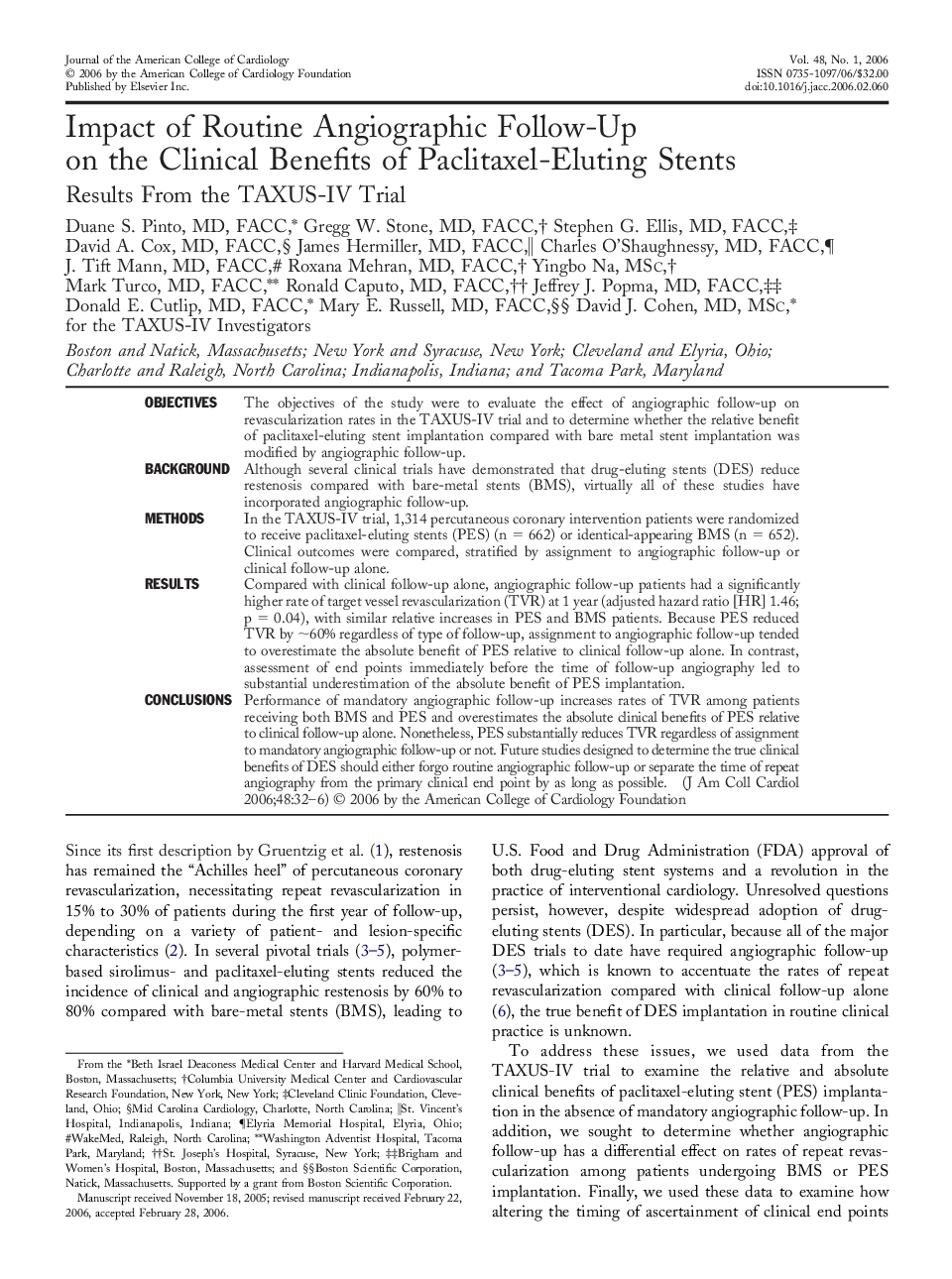| کد مقاله | کد نشریه | سال انتشار | مقاله انگلیسی | نسخه تمام متن |
|---|---|---|---|---|
| 2952162 | 1577508 | 2006 | 5 صفحه PDF | دانلود رایگان |

ObjectivesThe objectives of the study were to evaluate the effect of angiographic follow-up on revascularization rates in the TAXUS-IV trial and to determine whether the relative benefit of paclitaxel-eluting stent implantation compared with bare metal stent implantation was modified by angiographic follow-up.BackgroundAlthough several clinical trials have demonstrated that drug-eluting stents (DES) reduce restenosis compared with bare-metal stents (BMS), virtually all of these studies have incorporated angiographic follow-up.MethodsIn the TAXUS-IV trial, 1,314 percutaneous coronary intervention patients were randomized to receive paclitaxel-eluting stents (PES) (n = 662) or identical-appearing BMS (n = 652). Clinical outcomes were compared, stratified by assignment to angiographic follow-up or clinical follow-up alone.ResultsCompared with clinical follow-up alone, angiographic follow-up patients had a significantly higher rate of target vessel revascularization (TVR) at 1 year (adjusted hazard ratio [HR] 1.46; p = 0.04), with similar relative increases in PES and BMS patients. Because PES reduced TVR by ∼60% regardless of type of follow-up, assignment to angiographic follow-up tended to overestimate the absolute benefit of PES relative to clinical follow-up alone. In contrast, assessment of end points immediately before the time of follow-up angiography led to substantial underestimation of the absolute benefit of PES implantation.ConclusionsPerformance of mandatory angiographic follow-up increases rates of TVR among patients receiving both BMS and PES and overestimates the absolute clinical benefits of PES relative to clinical follow-up alone. Nonetheless, PES substantially reduces TVR regardless of assignment to mandatory angiographic follow-up or not. Future studies designed to determine the true clinical benefits of DES should either forgo routine angiographic follow-up or separate the time of repeat angiography from the primary clinical end point by as long as possible.
Journal: Journal of the American College of Cardiology - Volume 48, Issue 1, 4 July 2006, Pages 32–36